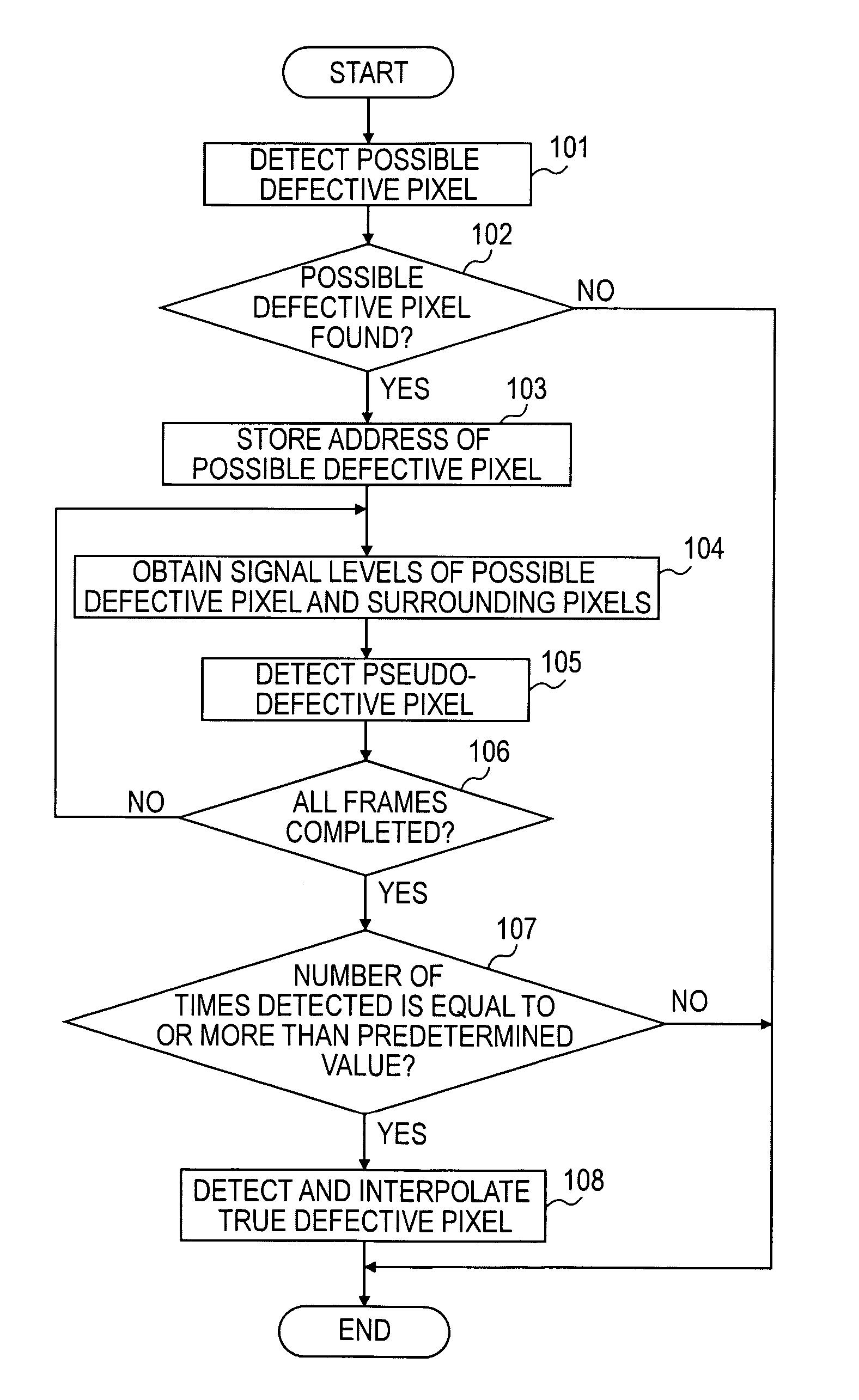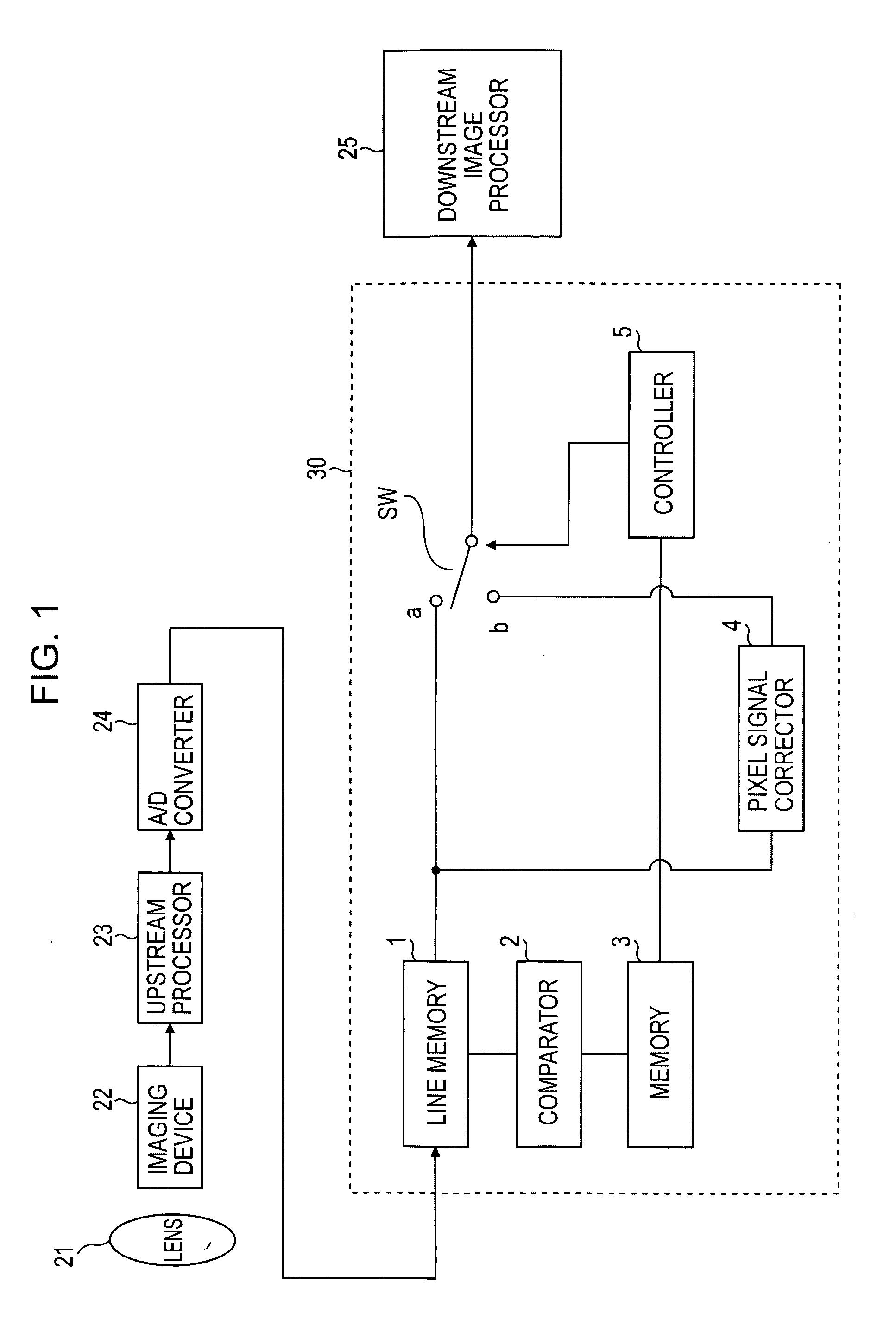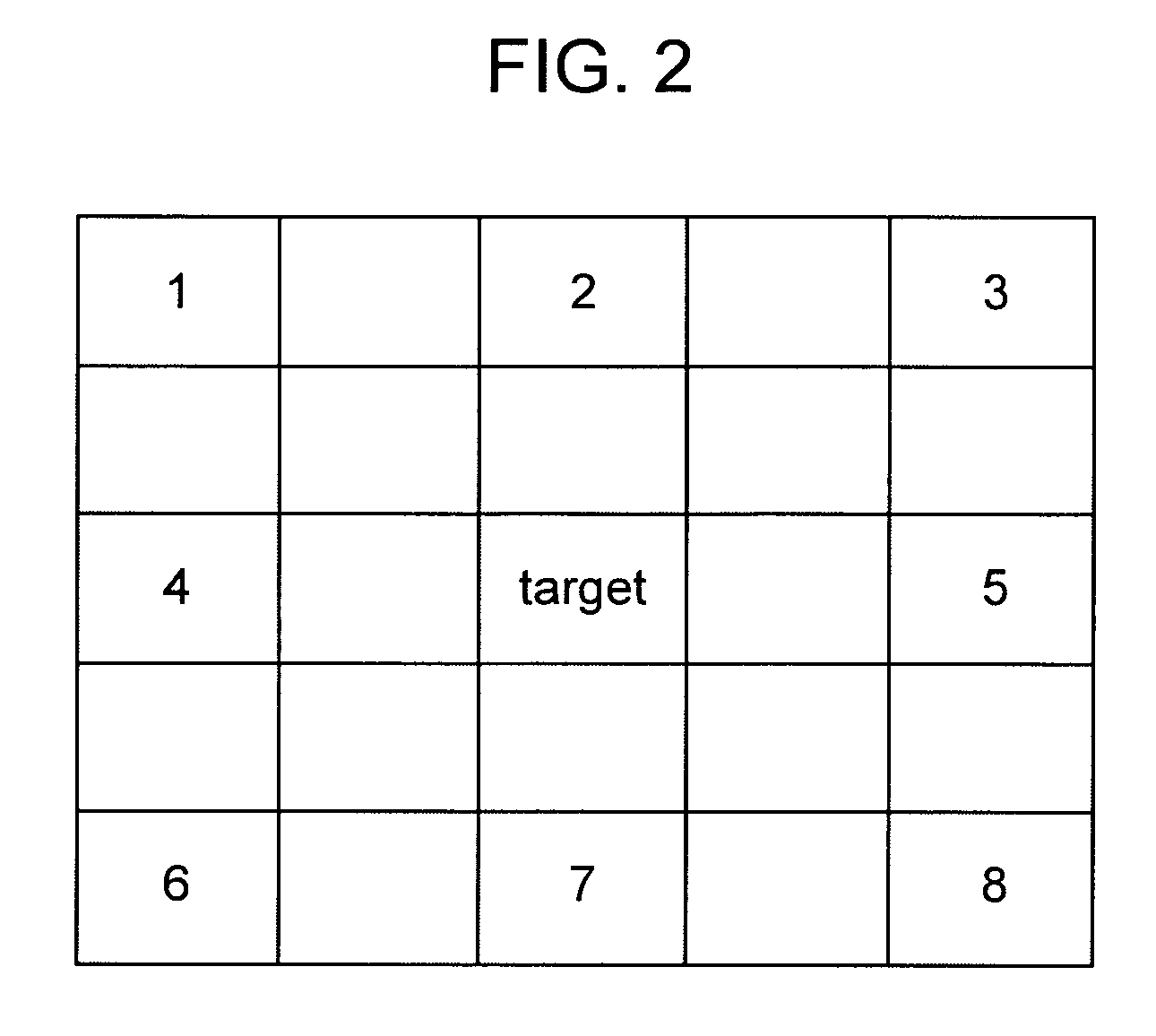Circuit and method for detecting pixel defect
a technology of defect detection and circuit, applied in the field of imaging devices, can solve the problems of increased production cost, new pixel defect due to ageing deterioration, unreachable, etc., and achieve the effects of high-accuracy pixel defect detection, low cost circuitry, and simple circuitry
- Summary
- Abstract
- Description
- Claims
- Application Information
AI Technical Summary
Benefits of technology
Problems solved by technology
Method used
Image
Examples
Embodiment Construction
[0017] A pixel defect of an imaging device is automatically detected with simple, low-cost circuitry in the following way. Pixel signals on one horizontal line are input from the imaging device, and a level of a target pixel signal is compared with levels of a plurality of surrounding pixel signals located to the right and left of the target pixel signal. If a difference between the levels is higher than a threshold value, the pixel corresponding to the target pixel signal is detected as a possible defective pixel, and the address of the detected possible defective pixel is held. After holding the levels of the detected possible defective pixel signal and the surrounding pixel signals from the pixel signals in the next frame, a correlation between the possible defective pixel signal and the surrounding pixel signals is calculated. If the correlation is not found, the possible defective pixel is detected as a pseudo-defective pixel, and the detection of the pseudo-defective pixel is ...
PUM
 Login to View More
Login to View More Abstract
Description
Claims
Application Information
 Login to View More
Login to View More - R&D
- Intellectual Property
- Life Sciences
- Materials
- Tech Scout
- Unparalleled Data Quality
- Higher Quality Content
- 60% Fewer Hallucinations
Browse by: Latest US Patents, China's latest patents, Technical Efficacy Thesaurus, Application Domain, Technology Topic, Popular Technical Reports.
© 2025 PatSnap. All rights reserved.Legal|Privacy policy|Modern Slavery Act Transparency Statement|Sitemap|About US| Contact US: help@patsnap.com



